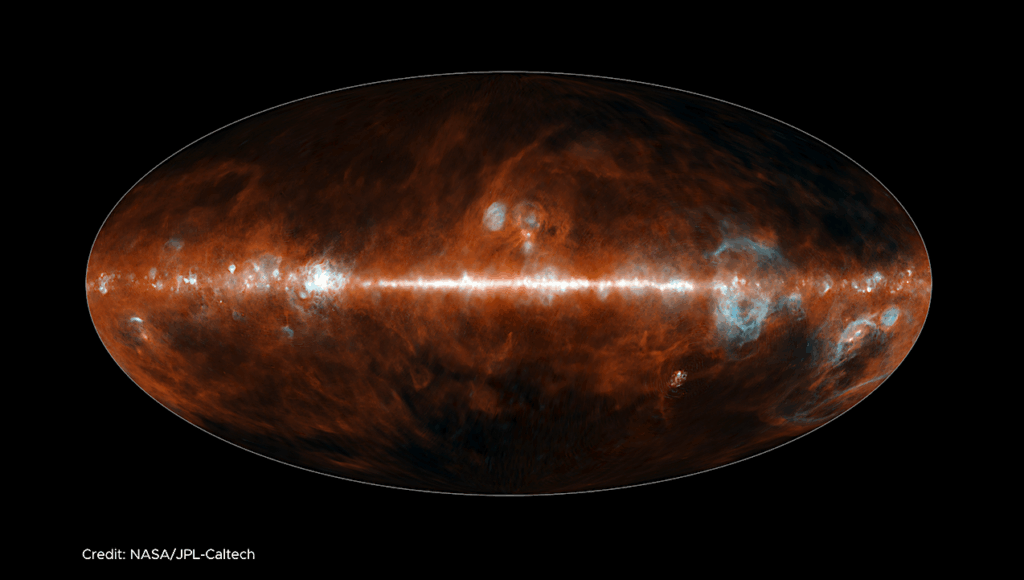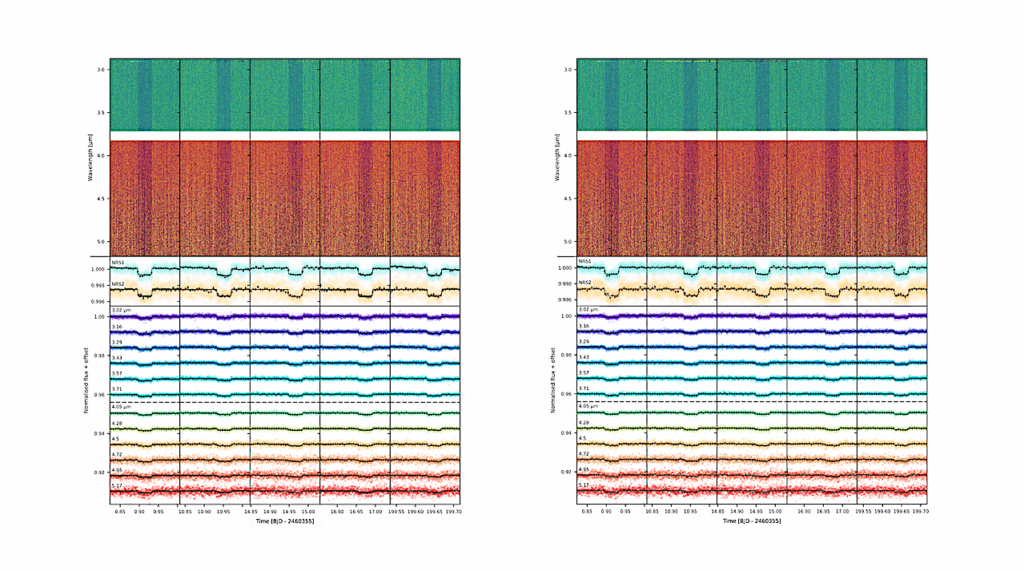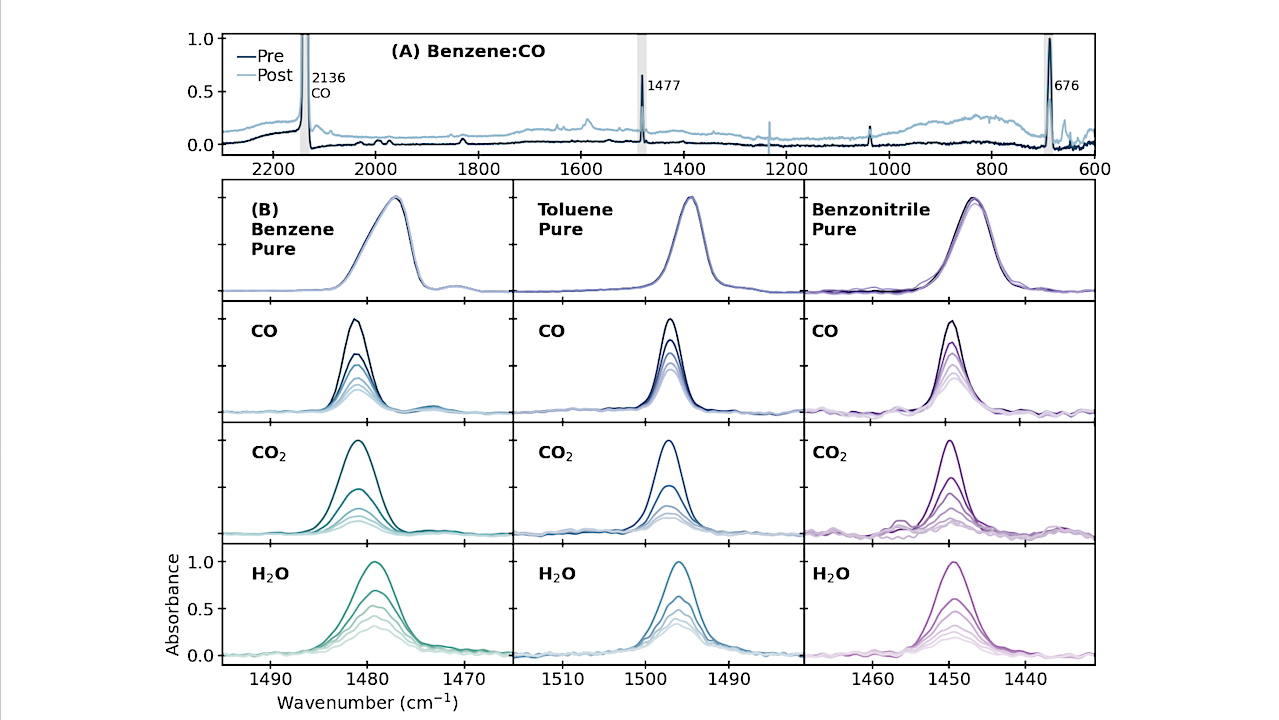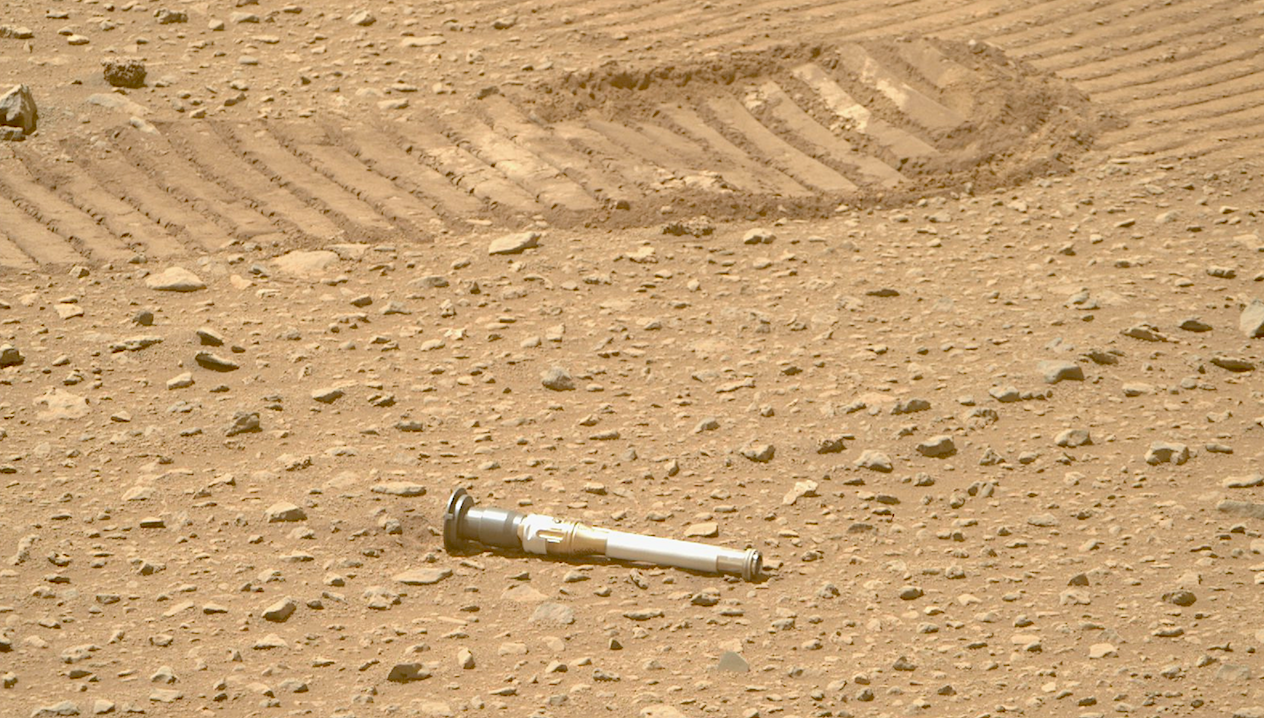Now Reading: Probing The Geological Setting Of Exoplanets Through Atmospheric Analysis: Using Mars As A Test Case
-
01
Probing The Geological Setting Of Exoplanets Through Atmospheric Analysis: Using Mars As A Test Case
Probing The Geological Setting Of Exoplanets Through Atmospheric Analysis: Using Mars As A Test Case
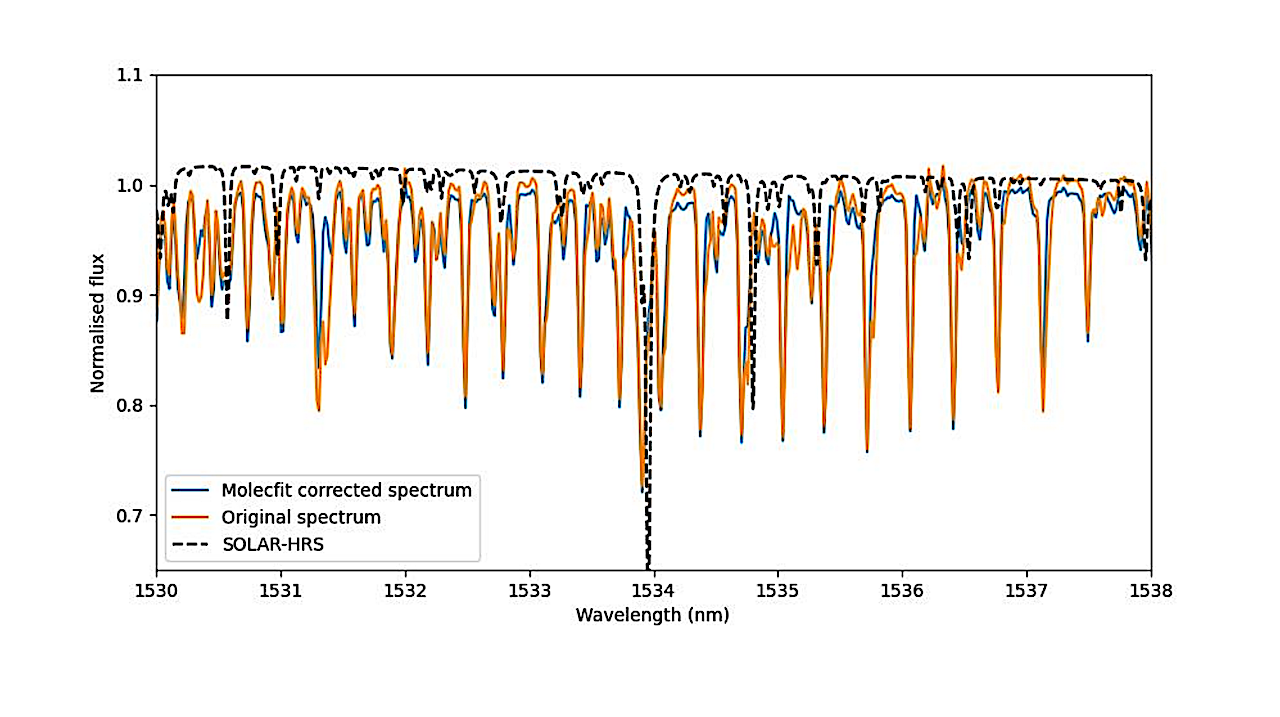

Selected wavelength region of a GIANO-B spectrum where many CO2 absorption lines are found. The original spectrum (orange line) is composed both by the telluric and the Martian CO2 lines, with the Martian signal being much stronger due to the high concentration of CO2 in the Martian atmosphere. The telluric-corrected spectrum is shown in blue: only the Martian CO2 remains. The dashed black line shows the solar SOLAR-HRS spectrum in the same wavelength range: even if there is no CO2 in the solar atmosphere, still some other absorption lines are present in the same wavelength range and they are blended with the Martian spectrum. The slight shift between the solar and the GIANO-B spectra is due to the different RV of the solar spectrum as reflected by the Martian surface in the GIANO-B spectrum. — astro-ph.EP
One of the frontier research fields of exoplanetary science is the study of the composition and variability of exoplanetary atmospheres.
This field is now moving from the gas giant planets towards the smaller and colder telluric planets, and future instruments like ANDES will focus on the observations of the atmosphere of telluric planets in the habitable zone in reflected light. These future observations will possibly find variable signals due to the view of different hemispheres of the planet.
Particularly, the strength of the signal may be linked to the thickness of the atmospheric layer probed, and therefore to the average altitude variations of the planetary surface, that are related to the global geodynamic evolution of the planet. To better prepare for the interpretation and exploitation of these future data, we used Mars as a Solar System analog of a spatially resolved telluric exoplanet.
We observed the reflected light of Mars with the high-resolution near-infrared (NIR) spectrograph GIANO-B (widely used in exoplanetary atmospheric studies) during a 3 month period: we studied the spatial and temporal variations of the Martian CO2 signal using the least-squared deconvolution technique (LSD), to mimic as closely as possible the standard exoplanetary atmospheric analysis.
We linked the variations found to the well-known Martian geological surface characteristics: we found a clear dependence of the strength of the CO2 signal with the thickness of the Martian atmospheric layer by comparing the retrieved CO2 signal with the altitudes of our pointings. The proposed strategy is promising: it proved to be effective on Mars and may shed light on the variations in the strength of atmospheric signal of telluric exoplanets.
Monica Rainer, Evandro Balbi, Francesco Borsa, Paola Cianfarra, Avet Harutyunyan, Silvano Tosi
Comments: 44 pages, 18 figures, accepted for publication on Icarus
Subjects: Earth and Planetary Astrophysics (astro-ph.EP)
Cite as: arXiv:2510.09305 [astro-ph.EP] (or arXiv:2510.09305v1 [astro-ph.EP] for this version)
https://doi.org/10.48550/arXiv.2510.09305
Focus to learn more
Submission history
From: Monica Rainer
[v1] Fri, 10 Oct 2025 11:53:16 UTC (1,643 KB)
https://arxiv.org/abs/2510.09305
Astrobiology, Astrogeology,
Stay Informed With the Latest & Most Important News
Previous Post
Next Post
-
 01From Polymerization-Enabled Folding and Assembly to Chemical Evolution: Key Processes for Emergence of Functional Polymers in the Origin of Life
01From Polymerization-Enabled Folding and Assembly to Chemical Evolution: Key Processes for Emergence of Functional Polymers in the Origin of Life -
 02Panasonic Leica Summilux DG 15mm f/1.7 ASPH review
02Panasonic Leica Summilux DG 15mm f/1.7 ASPH review -
 03How New NASA, India Earth Satellite NISAR Will See Earth
03How New NASA, India Earth Satellite NISAR Will See Earth -
 04And Thus Begins A New Year For Life On Earth
04And Thus Begins A New Year For Life On Earth -
 05Astronomy Activation Ambassadors: A New Era
05Astronomy Activation Ambassadors: A New Era -
06SpaceX launch surge helps set new global launch record in 2024
-
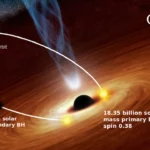 07Two Black Holes Observed Circling Each Other for the First Time
07Two Black Holes Observed Circling Each Other for the First Time












